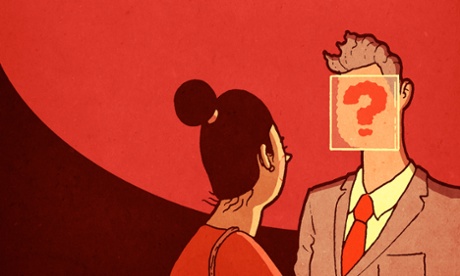
Kate Jones once walked straight past her husband at a train station. She knew that he was picking her up – but still blanked him. It wasn’t that she was angry with him. Jones (not her real name) has prosopagnosia – known as face blindness – so finds it impossible to recognise faces, however familiar.
Even her children’s features don’t cut through the condition; watching her daughter at a ballet show recently, she was unable to spot her among the other girls in identical buns and leotards. “I know who my children are, because they come out of school and run towards me,” she says. “And of course, I know what they are wearing. But yesterday I went to meet my mum and had to text her to wave at me.”
It may sound unusual, but according to Sarah Bate, the lead researcher at Bournemouth University’s Face Processing Disorders department, studies show a surprising number of people may have the same problem. Research in the past 10 years suggests as many as 2% of the population may have prosopagnosia – a higher number than suffer from autism. Bate’s own studies at Bournemouth University bear this out, and she says that while the testing for the condition needs to become more accurate, even if only 1% of people had it, that would mean 600,000 people in the UK. “It is a spectrum, so some people might recognise some faces in some situations, while others have complete face blindness and can’t even recognise their own,” she explains.
“People with prosopagnosia can see things normally – the eyes, nose and mouth,” Bate explains. “It’s just that they can’t tell the difference between them.” She points out that many people find it hard to distinguish between faces of people from another race they have had little exposure to, and that this is similar. For some the condition is a result of brain damage, but the vast majority of those with prosopagnosia have had a “developmental” form since birth – despite face recognition being one of the earliest skills we acquire. “Babies can recognise their mother’s faces hours after birth,” Bate says.
Among those born unable to distinguish between faces, there are two subtypes. “Some people have a problem with the way they look at faces – they see the features but they can’t put them together. Others can look [at a face] completely normally, but the problem comes when they are processing it. They see the features, but can’t find what distinguishes them from other people’s.”
There is no cure, but those with it often have very successful coping strategies – for instance, remembering hairstyles or clothes. Others find it more difficult. “One woman we saw went to get her baby from nursery, but picked up the wrong child,” Bate says. “The nursery workers put it right straight away, but it broke her heart.”
Some sufferers can develop social anxiety disorder as a result of their condition, which can have a disabling effect on their life. While for others their job or career progression can be affected. This is one reason why Bate wants the condition to be better understood. “Because there is little awareness, those with prosopagnosia are not being protected in the workplace in the same way someone with dyslexia would be,” she explains. “It’s the same with children with the condition – they are more likely to be labelled awkward or withdrawn, even diagnosed with autism.”
Hayley Sisher, a 42-year-old nurse, thought she might have autism before she was diagnosed with prosopagnosia. “In school I always felt odd because I never knew who anyone was. It was difficult to make friends because everyone looked the same. The friends I did make were all distinctive – the only red-headed girl in the school, for instance. I have always been told I am rude, don’t concentrate or ignore people because I do things like introduce myself twice.”
It was only by chance that Sisher discovered her condition. “I went to the optician and made an appointment for an hour later. When I returned, I introduced myself to the optician, not realising she had been doubling up as the receptionist. She immediately said: ‘You have prosopagnosia.’”
Sisher says the diagnosis has been very helpful. “It’s made a massive difference, knowing that I have a condition which can’t be helped, but can be managed.” The biggest change has been at work. “I always triple-checked my patients’ names. But now, instead of blushing my way through a consultation with a patient I have met before but can’t recognise, I just tell them about my problem.
“They are fascinated and it means they don’t find it awkward when I walk past them in the waiting room. It’s nice to have on record that I am not being rude or difficult.”
Jones says that although her condition has not held her back, it can be difficult to network, and causes embarrassment. “I squirm inside, but what can you do? I have been in a few meetings where I was too junior to ask everyone to introduce themselves so I haven’t known what is going on.”
Neither Sisher nor Jones find watching films or TV shows enjoyable, because it is hard to follow plots if the characters on the screen all look alike. And Sisher says the condition can make forming relationships tricky. “You can’t see someone and think: ‘They look nice.’ Then slowly build up to talking to them, because you will think you have never seen them before,” she says. “And meeting someone new in a bar is hard because you won’t recognise them, so I tend not to bother.”
But she says there are upsides. “It does mean you don’t go from one pretty face to another – you are a little more discerning.”
For more information on prosopagnosia, go to prosopagnosiaresearch.org/awareness/campaign

